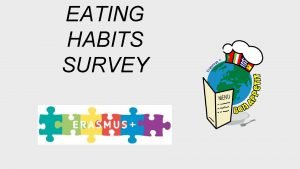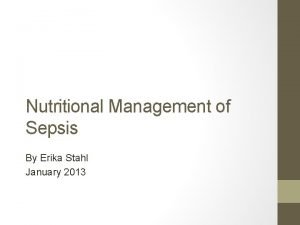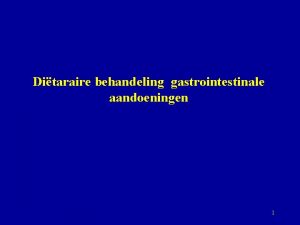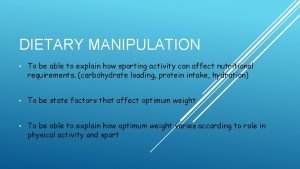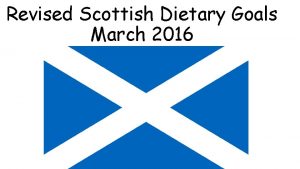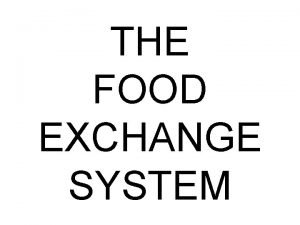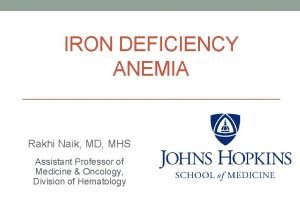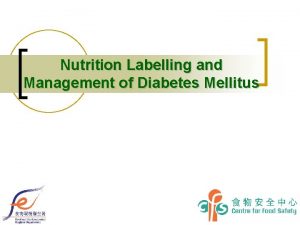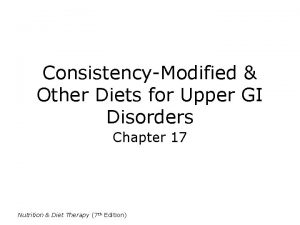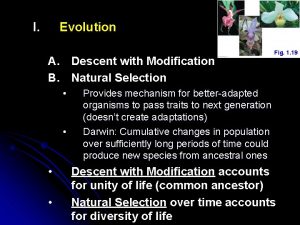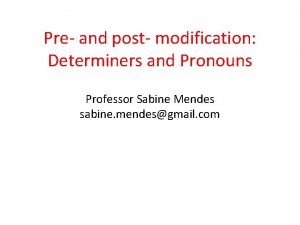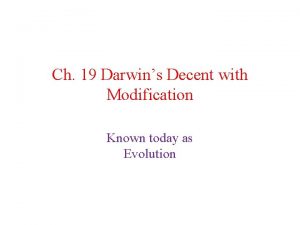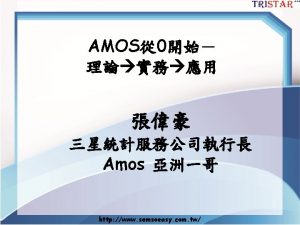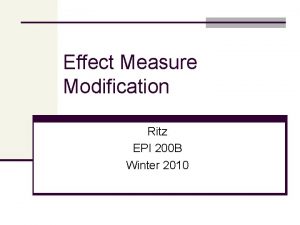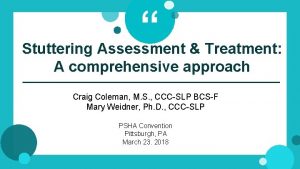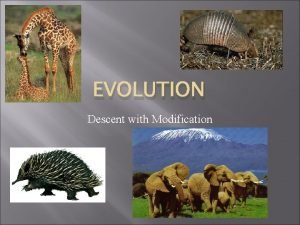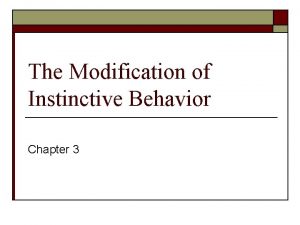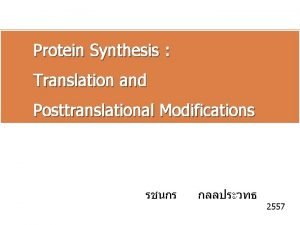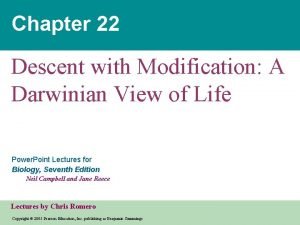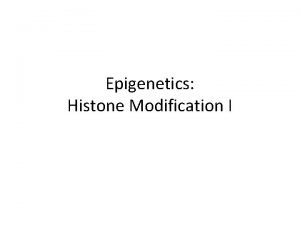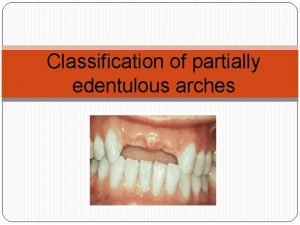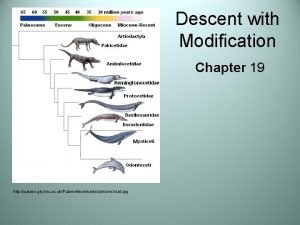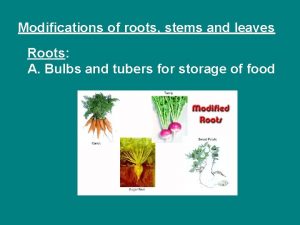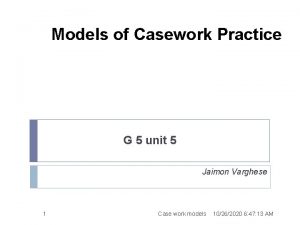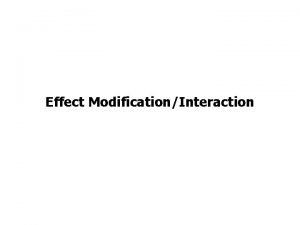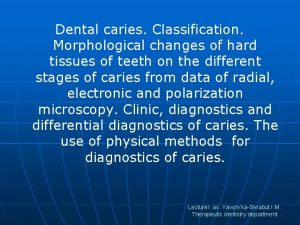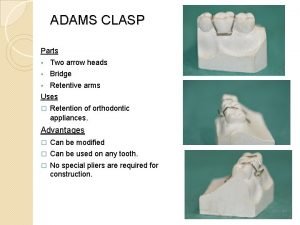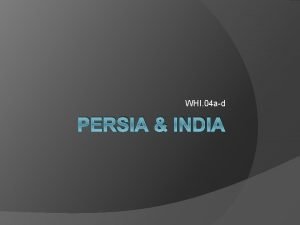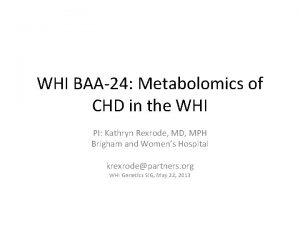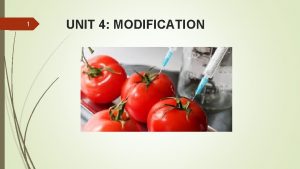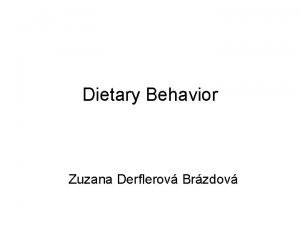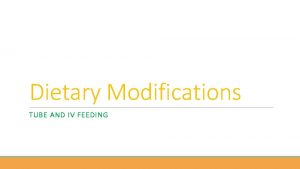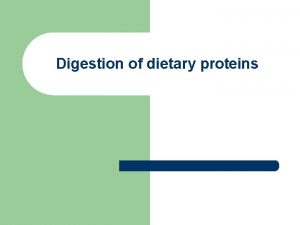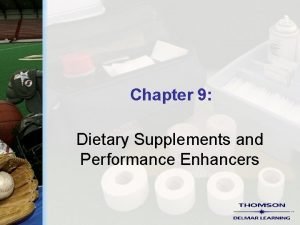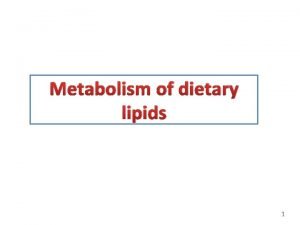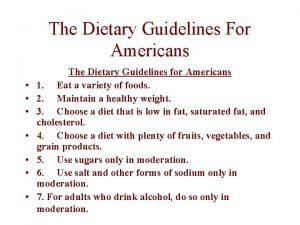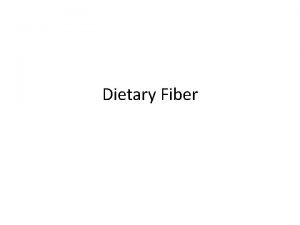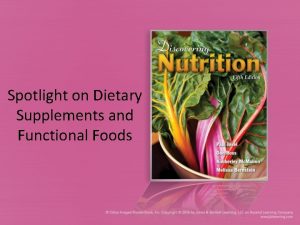WHI Dietary Modification DM Trial Dietary WHI DM
























































































- Slides: 88

WHI Dietary Modification (DM) Trial Dietary

WHI – DM Trial Leslie Ford, MD Session Moderator Associate Director of Clinical Research Division of Cancer Prevention, National Cancer Institute National Institutes of Health Rockville, Maryland Dietary

Carolyn Clifford 1941 -2001

DM Trial Morning Session I The Intervention Background Hypothesis and Design The Dietary Change Program Personal Accounts of Dietary Change Participants o Audience Questions o o Dietary

DM Trial Background and Hypothesis o Background Maureen Henderson, OBE, MD, DPH o Hypothesis and Design Ross Prentice, Ph. D Dietary

Dietary Modification Trial Background Maureen Henderson, OBE, MD, DPH Past Principal Investigator Seattle Clinical Center Emeritus Professor of Epidemiology and Medicine University of Washington Seattle, Washington Dietary

Breast Cancer Rates by Country Breast cancer incidence per 100, 000 women 55 -69 years of age Cancer Incidence in Five Continents vol. V. WHO, IARC, 1987 Dietary

Feasibility & Safety of the Intervention o Feasibility Low-fat eating patterns can be achieved and maintained by women of all ages, income, breast cancer risk levels, and racial and ethnic backgrounds o Safety No serious side effects during either two year study or among a sample of study women 2 years later Eating 5+ servings of fruit and vegetables and 6+ servings of grains were made into specific goals for the WHI instead of recommendations as in the two pilot studies. Women’s Health Trial Vanguard 1984 and Women’s Health Trial: Feasibility in Minority Populations 1995 Dietary

Colorectal Cancer Dietary

Coronary Heart Disease o WHI designed primarily for breast cancer o However, WHT pilot studies showed: A persistent reduction in: o Total fat intake o Saturated fat intake o Total blood cholesterol No increase in polyunsaturated fats o For safety reasons no further changes in P/S ratio were proposed for the WHI Dietary

Women’s Health Trial Vanguard Pilot Study: Intervention Group Measure Baseline Year 1 Year 2 Total fat, percent of calories 39. 1% 21. 6% 22. 6% Saturated fat, percent of calories 13. 8% 7. 0% 7. 2% Blood cholesterol 221 mg/d. L 207 md/d. L 210 mg/d. L Prev Med. 1990; 19: 115 -133 Dietary

Dietary Modification Trial Hypothesis and Design Ross Prentice, Ph. D Principal Investigator Clinical Coordinating Center Member, Public Health Sciences Division Fred Hutchinson Cancer Research Center Seattle, Washington Dietary

Premise of the DM Trial International comparisons, time trend and migrant studies, motivated the trial, and led to the basic trial hypothesis for a 20% versus a 40% energy from fat diet. Dietary

Adherence Assumptions Feasibility study data were used to specify an adherence assumption. 13% 11% Dietary

Breast Cancer Incidence Age-Adjusted Women of ages 45 -69 1973 -1977 versus per capita fat consumption 1975 -1977 Dietary

Dietary Fat & Postmenopausal Breast Cancer Fat Consumption Quintile Case-control Studies Howe et al (1990, JNCI) 1 1. 20 1. 24 1. 46 (p<. 0001) 1 1. 01 1. 12 1. 07 1. 05 (p=0. 21) Cohort Studies Hunter et al (1996, NEJM) Ability to adequately characterize and adjust for measurement error? Dietary

Underreporting of Energy and Protein BMJ 1995; 311: 986 -989. Lancet 2003; 362: 212 -214 Dietary

DM Eligibility & Assumptions o Women having FFQ% energy from fat <32% were excluded. o National breast cancer incidence rates projected for control group. o Loss to follow-up and competing risk assumptions incorporated. o Assumptions combine to give a projected 14% lower breast cancer incidence in the intervention (I) versus the comparison (C) group Dietary

Some Elements of Study Design o Target sample size 48, 000 o Excludes women with prior breast or colorectal cancer o Age and ethnicity goals o 40% Intervention; 60% Comparison o Projected power Invasive breast cancer 86% Colorectal cancer 90% Coronary heart disease 86% o Dietary intervention program based on NCI- sponsored feasibility studies Dietary

DM Trial Dietary Change Session o Dietary Change Program Deborah Bowen, Ph. D o Predictors of Change Lesley Tinker, Ph. D, RD Dietary

The Dietary Change Program Deborah J. Bowen, Ph. D Co-investigator Clinical Coordinating Center Professor – University of Washington Member - Fred Hutchinson Cancer Research Center Seattle, Washington Dietary

Dietary Change Goals: Intervention Group o 20% energy from fat o 5 or more fruit and vegetable servings daily o 6 or more grain servings daily Photos courtesy of USDA Agricultural Research Service Dietary

Packaging the Strategies: CORE Structure of the Intervention 18 group sessions Year 1 AUGMENTATIONS BASELINE Quarterly maintenance sessions Year 2 and beyond END OF DM TRIAL • Motivational Interviewing – 3 personal contacts • Targeted Messaging – Mailing • Tailored Feedback: Personal Evaluation of Fat Intake – Group sessions • Tailored Feedback: Personal Evaluation of Fat Intake–Mailing • Clinical Center augmentations Dietary

Fats of Life – Fats in Foods Higher fat meal = 49 fat grams Fried chicken breast (3 oz) Potato salad (1/2 cup) Green beans and bacon (1/2 cup) Cornbread (3 by 3 1 inches) Lower fat meal = 10 fat grams Roast chicken breast no skin (3 oz) Brown rice (1/2 cup) Green beans (1/2 cup) with 1 tsp seasoned oil Whole wheat roll, 1 medium Dietary

Nutritional strategies o Fat identification o Food purchasing o Food preparation o Fat budgeting Dietary

Behavioral strategies o Self-Management o Cognitive behavioral strategies o Social support and interaction o Relapse prevention o Self-determination and self-efficacy Dietary

Adherence strategies o Regular contact o Record keeping o Reinforcement of progress Dietary

Augmented interventions o Motivational interviewing techniques o Enhanced intervention messages o Enhanced interventions for special populations Dietary

Predictors of Dietary Change Lesley Tinker, Ph. D, RD Co-investigator Clinical Coordinating Center Nutrition Scientist Fred Hutchinson Cancer Research Center Seattle, Washington Dietary

What Have We Learned? o More lowering of % calories from fat among: *** Women who attended more dietary sessions *** Women who self-monitored their food intake Women less than 65 years of age at baseline White women compared to African American women Women with BMI <35 White women compared to Hispanic women Women with household incomes above $20, 000 annually Women also randomized to the HT Trial Yr 1 Yr 5 J Am Diet Assoc. 2004; 104: 654 -658 Dietary

Physical & Emotional Predictors of Dietary Change Higher session attendance or self-monitoring during Year 1 Higher emotional well-being at baseline Lower fat intake at Year 1 Some of the effect of emotional well-being on fat intake is mediated by session attendance and self-monitoring. J Am Diet Assoc. 2002; 102: 789 -800 Dietary

Changes in Grams of Fat from Foods Intervention Group Food Baseline Yr 1 - Base Yr 2 – Yr 1 Added fats 16. 1 -12. 5 0. 8 Meats 13. 6 -6. 7 0. 5 Desserts 7. 1 -6. 1 0. 4 Milk, cheese 5. 7 -3. 5 0. 2 Mixed dishes 6. 0 -2. 3 0. 1 High-fat breads, salty snacks 3. 7 -2. 6 0. 2 J Am Diet Assoc. 2003; 103: 454 -460 Dietary

DM Trial Personal Accounts from Participants Facilitators: Yasmin Mossavar-Rahmani, Ph. D (NYC) Linda Snetselaar, Ph. D, RD (Iowa) Participants: Dolores Buckley (Worcester) Betty Cintas (Stanford) Sylvia Grendisa (Buffalo) Olga Lamarche (Seattle) Marcia Mazur (George Washington University) Dietary

Audience Questions Leslie Ford, MD Associate Director of Clinical Research Division of Cancer Prevention, National Cancer Institute National Institutes of Health Rockville, Maryland Dietary

DM Trial – The Results o Overview and Baseline Demographics Norman Lasser, MD, Ph. D o Dietary Assessment Cynthia Thomson, Ph. D, RD o Dietary Change and Biomarkers Bette Caan, Dr. PH Dietary

DM Trial – The Results o Breast Cancer Ross Prentice, Ph. D o Colorectal Cancer Shirley Beresford, Ph. D o Heart Disease and Stroke Linda Van Horn, Ph. D, RD o Summary and Dietary Implications Peter Greenwald, MD, Dr. PH o Audience Questions Leslie Ford, MD (Moderator) Dietary

Recruitment, Retention, and Baseline Demographics Norman Lasser, MD, Ph. D Principal Investigator Newark Clinical Center Professor of Medicine University of Medicine and Dentistry of New Jersey, New Jersey Medical School Newark, New Jersey Dietary

WHI DM Trial 373, 092 completed the eligibility screening form 56, 139 eligible 316, 953 excluded (refused, low fat intake, info not avail) 7, 304 excluded (staff/participant reevaluation, history of breast cancer, other) 48, 835 randomized Intervention 19, 541 Comparison 29, 294 Status 3/31/05 26, 677 alive & retained 17, 674 alive & retained 1, 867 lost, deceased, or withdrew 2, 667 lost, deceased, or withdrew 19, 541 included in analysis 29, 294 included in analysis Dietary

WHI DM Trial: Race and Ethnicity Dietary

WHI DM Trial: Age at Baseline Average 62. 3 years Dietary

Baseline Physical Characteristics o Waist circumference 89 cm o Physical activity 10 METS o Smoking 93% never or past 7% current o Alcohol 28% never or past 72% current o Calories 1790 Dietary

Overlap with WHI Hormone or Calcium Vitamin D Trials Hormone Trials p=0. 05 Calcium plus D Trial p<0. 001 Dietary

Generalizability Baseline characteristics DM and OS Dietary

Dietary Assessment Cynthia Thomson, Ph. D, RD Co-Principal Investigator Tucson/Phoenix Clinical Center University of Arizona Tucson, Arizona Dietary

How Was Diet Measured? Study Start Food Frequency Questionnaire All Year 1 Food Frequency Questionnaire All Year 2 Close-out Food Frequency Questionnaire Rotating 1/3 of participants Assess change in intake over time Year 3, 6, 9 4 -day food records Case only analysis 4 -day food records 4. 6% of participants 24 hour recalls 1% of participants Assess Repeat (x 2)24 hr Recalls intervention 4. 6% of participants effects Calibrate with other diet measures Dietary

WHI Food Frequency Questionnaire Dietary

Advantages and Disadvantages Food Frequency Records Recalls • Long term eating • Low participant burden • Administer by mail • Cost-effective • Short term eating • More detail • Short-term eating • More detail • Less report bias • Limited foods • Less detail • Ability to recall • Report bias • Participant burden • Completeness • Behavior change • More costly • Participant burden • Ability to make contact • Ability to recall • More costly Dietary

Dealing with Uncertainty o Multiple measures of self-report o Biomarkers Double-labeled water – caloric intake Urinary nitrogen – protein Plasma carotenoids – fruit and vegetable intake o Composite of self-report and biomarkers o WHI DM Nutritional Biomarkers Study Assess factors that influence the accuracy of self-report Develop mathematical formulae for improving selfreport of caloric intake Dietary

Dietary Changes & Biomarkers Bette Caan, Dr. PH Principal Investigator Oakland Clinical Center Senior Research Scientist Division of Research, Kaiser Permanente Medical Program Oakland, California Dietary

Dietary Intake: Percent Calories from Fat Howard BV et al. JAMA Feb 2006 Dietary

Dietary Changes in the Intervention Group: Types of Fat JAMA 2006; 295; 655 -666 Dietary

Dietary Intake: Fruits and Vegetables JAMA 2006; 295; 655 -666 Dietary

Dietary Intake: Grains & Whole Grains JAMA 2006; 295; 655 -666 Dietary

Nutrient Intakes & Blood Biomarkers Baseline-Year 3, Inter-Cont Daily Nutrient Intakes Folate (dietary), μg Fiber, g Red meats, servings 259 15. 4 0. 9 + 62 (+24. 5%**) + 3. 1* (+20. 0%) - 0. 2 (-22. 0% **) Biomarkers in Blood Total cholesterol, mg/d. L 224 - 3. 3 * LDL-cholesterol, mg/d. L 133 - 3. 6 * HDL-cholesterol, mg/d. L 60. 1 Total carotenoids, μg/d. L 0. 88 Gamma tocopherol, μg/d. L 2. 3 JAMA 2006; 295; 629 -642; JAMA 2006; 295; 642 -654; JAMA 2006; 295; 655 -666 - 0. 4 + 0. 04 (+ 5% ) - 0. 21 * * p<. 05 ** p<. 001 Dietary

Changes in Body Weight JAMA 2006; 295; 39 -49 Dietary

Breast Cancer Ross Prentice, Ph. D Principal Investigator Clinical Coordinating Center Member, Public Health Sciences Division Fred Hutchinson Cancer Research Center Seattle, Washington Dietary

Risk of Breast Cancer and Other Major Clinical Outcomes JAMA 2006; 295; 629 -642 Dietary

Breast Cancer: Cumulative Hazard Ratios 1, 727 total diagnoses 3. 5% of all DM participants Study Year JAMA 2006; 295; 629 -642 Dietary

Blood Hormone Concentrations Reduced Increased Estradiol Estrone-sulfate Testosterone Sex hormone binding globulin Relative Change from Baseline JAMA 2006; 295; 629 -642 Dietary

Hazard Ratios by Dietary Factors JAMA 2006; 295; 629 -642 Dietary

Interpretation o Intensive intervention resulted in significant and sustained dietary fat reduction and vegetable and fruit increase. o Observed 9% lower breast cancer rate (15% among “adherent women”) may be attributable to chance. JAMA 2006; 295; 629 -642 Dietary

Interpretation (continued) o Longer follow-up needed for a more definitive evaluation of low-fat eating pattern and breast cancer hypothesis: Power reduced by 8. 1 rather than 9 years of average follow-up and by less than targeted adherence. Greater evidence of breast cancer reduction among women having higher baseline % energy from fat. JAMA 2006; 295; 629 -642 Dietary

Colorectal Cancer Shirley A. A. Beresford, Ph. D Principal Investigator Seattle Clinical Center Professor, Epidemiology – University of Washington Member - Fred Hutchinson Cancer Research Center Seattle, Washington Dietary

Colorectal Cancer Objective: To evaluate the effects of a low-fat dietary pattern on risk of colorectal cancer in postmenopausal women JAMA 2006; 295; 642 -654 Dietary

Colorectal Cancer: Cumulative Hazard Ratios 480 total diagnoses (1% of all DM participants) JAMA 2006; 295; 642 -654 Dietary

Colorectal Cancer: Annualized Rates and Hazard Ratios HR=1. 08 (0. 90, 1. 28) HR=1. 25 (0. 96, 1. 61) HR=0. 86 (0. 56, 1. 19) JAMA 2006; 295; 642 -654 HR=1. 11 (0. 77, 1. 61) Dietary

Bowel Examinations: Polyps/Adenomas HR, 0. 91 95% CI, 0. 87 -0. 95 Rectal Exam Hemoccult guaiac Sigmoidoscopy/flex. sig/colonoscopy Int Cmp Barium enema x-ray JAMA 2006; 295; 642 -654 Dietary

Colorectal Cancer Hazard Ratios by Baseline Participant Characteristics JAMA 2006; 295; 642 -654 Dietary

Colorectal Hazard Ratios by Baseline Dietary Factors JAMA 2006; 295; 642 -654 Dietary

Colorectal Cancer - Conclusions o The low fat dietary pattern intervention did not reduce the risk of colorectal cancer over 8. 1 years o Reduction in polyps and adenomas associated with the intervention suggest longer follow-up is needed before long term effects can be ruled out. JAMA 2006; 295; 642 -654 Dietary

Cardiovascular Disease (Heart Disease and Stroke) Linda Van Horn, Ph. D, RD Principal Investigator Chicago Northwestern Clinical Center Professor, Northwestern University Feinberg School of Medicine Chicago, Illinois Dietary

Definitions o Coronary heart disease (CHD): Heart attack, heart bypass surgery, stent, or angioplasty o Stroke: Lack of blood flow to the brain or bleeding in the brain leading to weakness or paralysis, and impairment of speech or other functions JAMA 2006; 295; 655 -666 Dietary

Coronary Heart Disease: Cumulative Hazard Ratios 2, 549 total diagnoses (5% of all DM participants) Hazard ratio = 0. 97 (95% CI = 0. 90 -1. 06) JAMA 2006; 295; 655 -666 Dietary

Stroke: Cumulative Hazard Ratios 1, 076 total diagnoses (2% of all DM participants) Hazard Ratio = 1. 02 (95% CI = 0. 90 -1. 15) JAMA 2006; 295; 655 -666 Dietary

Changes in Risk Factors Difference at year 3 (I-C) IMPROVED Baseline LDL-cholesterol, mg/d. L 76 - 0. 3 ** Factor VIIC, % 131 - 4. 9 ** NO CHANGE Risk factor Triglycerides, mg/d. L` 139 Diastolic blood pressure, mm Hg HDL-cholesterol, mg/d. L 133 - 3. 6 * 0 60 - 0. 4 Glucose, mg/d. L 100 - 1. 1 Insulin, µIU/m. L 10 JAMA 2006; 295; 655 -666 0 * p<. 05; ** p<. 001 Dietary

Changes in Types of Fat Type of fat Saturated fat, % calories Baseline Difference: Yr 1 (I-C) Yr 6 (I-C) 12. 7 - 3. 7 * - 2. 9 * Trans fat, % calories 2. 7 - 0. 8 * - 0. 6 * Polyunsaturated fat, % calories 7. 8 - 2. 0 * - 1. 5 * P/S ratio 0. 6 0 0 * p<. 001 JAMA 2006; 295; 655 -666 Dietary

Additional Analyses: Heart Disease Risk Intake at Year 1 Decreased Risk JAMA 2006; 295; 655 -666 Dietary

Cardiovascular Disease: Conclusions o Postmenopausal women who initiated a low fat dietary pattern had no significant reductions in coronary heart disease, stroke, or cardiovascular disease (CVD) after 8. 1 years. o Some CVD risk factors were modestly improved, especially among women with greater adherence to dietary recommendations. o Interventions on specific dietary factors known to influence risk of CVD and potentially initiated younger in life may be needed to improve risk factors and CVD risk. JAMA 2006; 295; 655 -666 Dietary

Women’s Health Initiative The Dietary Modification Results Summary & Dietary Implications Peter Greenwald MD, Dr. PH Division of Cancer Prevention National Cancer Institute, NIH February 28, 2006

Women’s Health Initiative Dietary Fat & Breast Cancer Studied Eating Fat % Calories from Fat Total Fat Post-menopausal Breast Cancer Risk Did Not Study Being Fat Grams of Fat Type of Fat Pre-menopausal Exercise Breast Cancer Prognosis 80

Women’s Health Initiative Fabulous study, BUT some limitations 1. Reductionist thinking hinders dietary research 2. Public message may ↓ reporting of fat intake 3. Lack of lab measures to validate intake 4. Carcinogenesis takes many years 81

The Causes of Cancer – Richard Doll & Richard Peto, 1981 Diet 35% Other Factors 35% Tobacco 30%

What is the Right Message? Reduce consumption of fat (especially saturated fat) and cholesterol Choose a diet low in fat, saturated fat, and cholesterol Consume nutritionally adequate and varied diets, based primarily on foods of plant origin

One Size Doesn’t Fit All Steps to Healthier You • Make smart choices from every food group • Find your balance between food and physical activity • Get the most nutrition out of your calories USDA 2005

Nutrigenomics & Beyond Mapping Individual Health DIET & – – – Gene polymorphisms Nutritional Epigenomics Transcriptomics Proteomics Metabolomics

Women’s Health Initiative Future Needs 1. ↑ Basic Nutritional Science 2. 3. 4. 5. 6. 7. …omics ↔ …ologies Truly Validated Markers of Dietary Intake, Effect (Molecular Targets) & Susceptibility At various times of life ↑ Research on Bioactive Food Compounds ↑ Research & Development of Engineered Foods ↑ Dietary Intervention Trials ↑ Robust Nutritional Science at NIH Intramural & Extramural Long-term Follow-up of WHI Participants 86

Nutrition “is the ultimate biochemical interaction – the human organism reacting with the environment, daily, in a very intimate sense. And it’s been starved for research funding. ” Bernadine Healy, 2004

Audience Questions Leslie Ford, MD Associate Director of Clinical Research Division of Cancer Prevention, National Cancer Institute National Institutes of Health Rockville, Maryland Dietary
 Whi format
Whi format Whi
Whi Red yellow green blue purple pink
Red yellow green blue purple pink Dietary habits questionnaire
Dietary habits questionnaire Sepsis dietary management
Sepsis dietary management Dietary supplement definition
Dietary supplement definition Malassimilatie
Malassimilatie Dietary manipulation in sport definition
Dietary manipulation in sport definition Vitamin k dietary sources
Vitamin k dietary sources Scottish dietary goals 2020
Scottish dietary goals 2020 Food exchange system
Food exchange system Hong kong dietary guidelines
Hong kong dietary guidelines Dietary acculturation
Dietary acculturation Iron deficiency anemia
Iron deficiency anemia Theravada meal chant
Theravada meal chant Dietary management of diabetes
Dietary management of diabetes Mechanically altered diet
Mechanically altered diet Dietary supplement questionnaire
Dietary supplement questionnaire Mealracker
Mealracker Classification of nutraceuticals
Classification of nutraceuticals Descent with modification definition
Descent with modification definition Modification in grammar
Modification in grammar Decent with modification
Decent with modification Structure of modification
Structure of modification What is descent with modification
What is descent with modification Recipe modification
Recipe modification Amos報表解讀
Amos報表解讀 Behaviour modification
Behaviour modification Tuber stem
Tuber stem Effect modifier vs confounder
Effect modifier vs confounder Modification of leaves
Modification of leaves Tense lax vowel chart
Tense lax vowel chart Ialloc algorithm in unix
Ialloc algorithm in unix Hand over mouth exercise
Hand over mouth exercise Accommodation vs modification
Accommodation vs modification Stuttering modification
Stuttering modification Descent with modification definition
Descent with modification definition Stately motility seen in
Stately motility seen in Behaviour modification
Behaviour modification Modification anomalies
Modification anomalies Modification
Modification Effect modifier vs confounder
Effect modifier vs confounder La county fuel modification
La county fuel modification Genome modification ustaz auni
Genome modification ustaz auni Covalently modulated enzymes
Covalently modulated enzymes Chapter 22 descent with modification
Chapter 22 descent with modification Pre and post modification
Pre and post modification Air mass modification
Air mass modification Sistema pat
Sistema pat Tooth number 18
Tooth number 18 Parts of a typical flowering plant
Parts of a typical flowering plant Mention two ways of modification of instinct.
Mention two ways of modification of instinct. Function of shoot system
Function of shoot system Areas of application of behavior modification
Areas of application of behavior modification Pengertian modifikasi perilaku
Pengertian modifikasi perilaku Ece243 labs
Ece243 labs Accommodation vs modification
Accommodation vs modification Post translation modification
Post translation modification Descent with modification: a darwinian view of life
Descent with modification: a darwinian view of life Functional chew in technique
Functional chew in technique Prosthodontics classification
Prosthodontics classification Confounding vs effect modification
Confounding vs effect modification Early fly
Early fly Kennedy's classification of edentulous space
Kennedy's classification of edentulous space Descent with modification
Descent with modification How to control for confounding
How to control for confounding Descent with modification
Descent with modification Single cell
Single cell Stem and root modifications
Stem and root modifications Interception fabrication modification interruption
Interception fabrication modification interruption Gj mount classification
Gj mount classification Van riper stuttering modification therapy
Van riper stuttering modification therapy Bioluminescent genetic modification
Bioluminescent genetic modification Deferred database modification example
Deferred database modification example Maglalatik classification
Maglalatik classification Models of casework practice
Models of casework practice Chapter 22 descent with modification
Chapter 22 descent with modification Accommodation vs modification
Accommodation vs modification Darwin
Darwin Chapter 22: descent with modification
Chapter 22: descent with modification Interception in cryptography
Interception in cryptography Trikle down
Trikle down Effect modification vs confounding
Effect modification vs confounding Y bar rpd
Y bar rpd Behavior modification therapy
Behavior modification therapy Chapter 19 descent with modification
Chapter 19 descent with modification Finns modification of cavity preparation
Finns modification of cavity preparation Palatal finger spring
Palatal finger spring Bill gates weather modification
Bill gates weather modification



